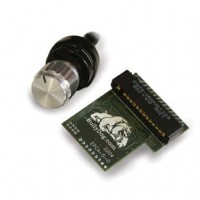The problem with trying to justify the financial expenses of Apollo 11 with the help of the accompanying products is that many of them have become so completely ingrained in our lives that we often ignore them.

If you ask people what they know about byproducts created by the $24 billion Apollo program, you can bet pretty sure they'll mention the Teflon pan. And yet, this is precisely one invention that was not created as part of the enormous technological effort to bring man to the moon. Teflon was discovered more than 30 years before Apollo 11, and kitchen utensils coated with it were sold even before Armstrong took the big step for man.
The problem with trying to justify the financial expenses of Apollo 11 with the help of the accompanying products is that many of them have become so completely ingrained in our lives that we often ignore them. For example, satellite communication. No one thinks twice when watching a news report from the desert in Africa, after which they change the channel and watch a game on Sky network and finally call a friend in Australia to tell him the results of the game. And yet, such activity is a direct result of the American desire to be the first on the moon.
So are more reliable weather forecasts, made possible thanks to 24-hour satellite monitoring of the Earth's atmosphere. With the help of early warning about extreme weather events such as hurricanes, countless lives have been saved.
And above all, the computers. Until the space race, the typical computer took up the volume of an entire room. NASA's requirement for a computer small enough to be sent into space, driving the invention of the microchip technology that exists today in everything from pocket diaries to computers to mobile phones. Without the impetus of the space race, many of these technologies would have taken significantly longer to develop, as scientists would never have received so much government funding so quickly. These by-products covered the Apollo expenses and more, by creating entire industries whose connection to the space program was completely forgotten.
It is precisely the smaller things, in human terms, that remain in the memory. The eagerness of the scientists to monitor the physical condition of the astronauts while fulfilling their mission, led to the development of lightweight sensors, which can be found on the bodies of patients in hospitals. Pacemakers that can be recharged and programmed without further surgery are also a direct result of a byproduct of the space program in the field of microelectronics and telemetry. And it wasn't just the race to the moon that led to useful byproducts. Preventing the wheels from locking during braking, ABS and airbags are two inventions that rely on a deceleration sensor, originally developed for the European space program.
The International Space Station (ISS), which is currently being built by the USA and Russia, is considered to be the likely ground for many breakthroughs in every field, from medicine to the theory of metals. However, many experts are skeptical about the possibility that the zero-gravity conditions on top of the station will prove to be particularly effective.
Space enthusiasts can now point to the ultimate space byproduct: a polystyrene sphere produced in the space shuttle's gravitational herd environment that cannot be produced on Earth. The ball, which is not deformed by gravity, has very precise dimensions, which makes it very effective in determining scale in production.
